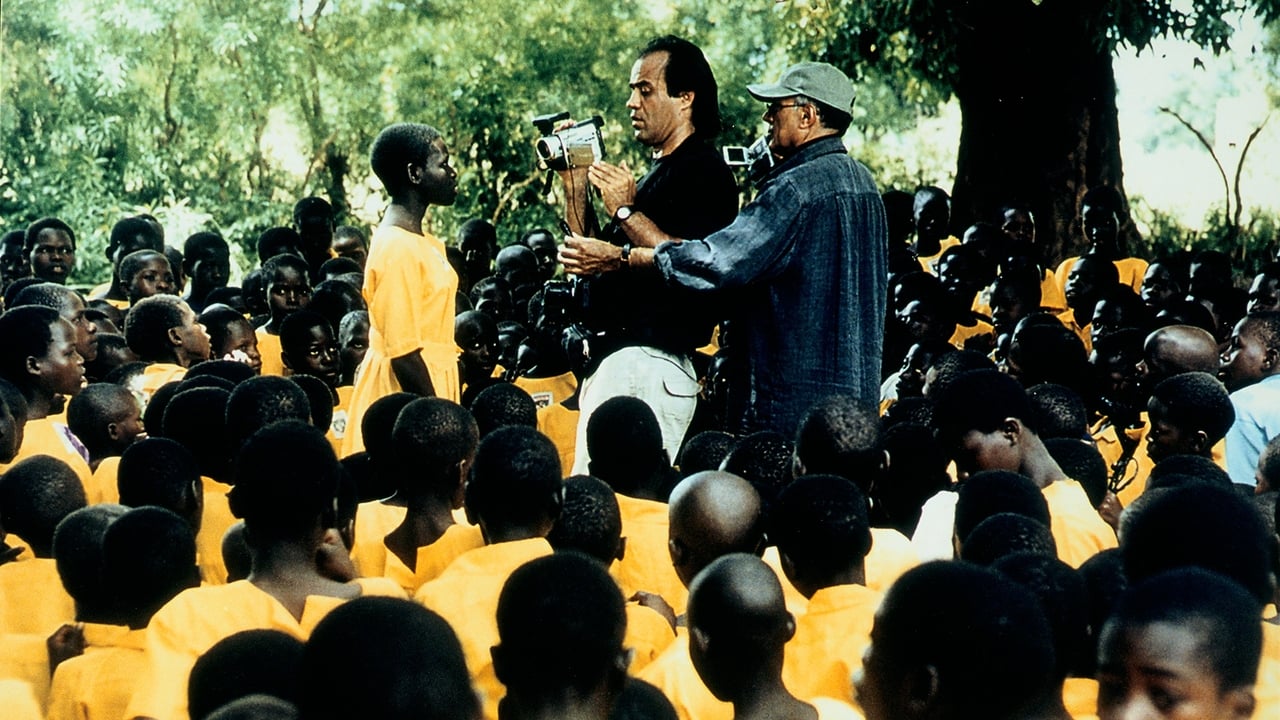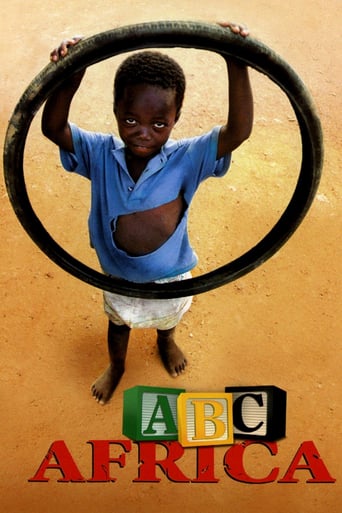

ABC Africa, which is simply Kiarostami's response to a plea for exposure and "international attention" by a Uganda's women organization to the plight of 2 million AIDS (and war) orphans, may be viewed as a reflective journal piece, a painterly poem, and a political support project all in one.Certainly, Kiarostami's approach is low-key, and understandably limited by an outsider's perspective. He must apprise all through a sensitivity to cultural differences--and privileges. So his work relies on an egalitarianism in the sense that it flows out of a plurality of centers that Kiarostami and his cameras gravitate to. Thus, detachment is minimized both by the use of hand-held digital and still cameras, and by the participation of all--crew and "cast"--in the goings on of film. And the integration of sound, song, dance, color, and voice, are made convincingly real. This is an intuitive, and congenial documentation, but never gives any indication of being a puff piece. If Kiarostami doesn't delve too deeply into the more disturbing side of the realty he depicts, it may well be that he's acknowledging his guest status--and perhaps, understandably, his lack of knowledge.In any case, the results are impressive--lyrical, screen-filled images insist on the beauty and reality of the unseen. Kiarostami is the poet-painter who fills his surfaces with both filmic and still portraits of orphans, women and taxi drivers. Heads, faces, clapping hands, and skin are joined to movement, gestures, and intonations which constitute an open social world--one in which Kiarostami himself joins by gesture, and voice as he bobs his camera in the midst of the long, colorful boys-chant scene. Almost everyone gets to have fun with his cameras and some resistant ones quickly break into bold smiles. But the lyricism is tempered by the AIDS center scenes, and by an invariably non-romanticized approach which never spares us the dire physical and social contexts of these phoenix-like women and children.Yes, Kiarostami does make a political statement in "ABC Africa"--he simply makes visible the lives of the Ugandan orphans and the courageous, hard-working women who have committed to saving their lives. "Imagine that grandmother living with 35 kids..." "half of their life in the dark" (no electricity) says one of the crew in the black out scene. "Humans can adapt to anything..." another says, and what is more human than the human-ness of these people, is the film's point. A 10 year commitment to each child's independence and empowerment--clothing, educating, providing safety for, feeding, economizing, is a collective endeavor worth shouting from the rooftops.But Kiarostami makes a number of subtle points as regards the cultural/political blocks this army of volunteers must counter in order to survive. A means Abstincenc, B means Be faithful and C means Condom with "C" being a last resort only. The Pope's image is evident all around and US aid is behind him-- a poster of Bob Marley can hardly compete with that. Then there is the government which is a part of the process and names a lot of the rules by which the work proceeds and is financed. On the countering side you have a strong woman's world view--the few men who appear blend in with the women and children-- which is like the African sun referred to by the crew in the black-out scene."ABC Africa's" truly remarkable ending has cumulus clouds transforming into the full faces of the dead and the living down below the clouds. As the adopted Ugandan girl is flown to her new home in Austria, some kind of visibility and solidarity has been achieved for those on and under the dispossessed terrain below.
... View MoreThis is a documentary shot at the request of a group of Ugandan women to publicise their mission to educate the AIDS and war orphans that would otherwise become a lost generation. The crew went to Uganda to shoot pilot footage using the smallest JVC mini-dv cameras intending to return with film cameras later, but the footage they took and the film that emerged from it is so unique that they felt the moment could never be recaptured. All Kiarostami's usual concerns with film form are put to the service of an enquiry into the relationship between film maker and subject without ducking uncomfortable questions about power and meeting of cultures. Released the same year as Black Hawk Down this film not only shows a side of Africa completely erased by Hollywood, it is a blueprint for a completely new approach to documentary. The comment that the best thing about the film is the format massively misses the importance and uniqueness of this film.
... View MoreKiarostami is invited by the International Fund for Agricultural Development (IFAD) to see the work of Uganda Women's Effort to Save Orphans (UWESO). Carrying a couple of camcorders, the director sets to document what he sees. The film material covers the period from April 2000 to March 2001.The ravages of civil war, AIDS and also malaria have resulted in a plenitude of orphans in Uganda. It is for them that UWESO exists.Kiarostami makes at least one extended visit to Masaka, the epicenter of the AIDS epidemic in Uganda. This is the kind of place where electricity is cut out at midnight. One of the longest take in the film is shot in a pitch black night after the lights go out.Efforts to control the spread of AIDS is hampered by religion. Use of condoms is discouraged by the religious. Virginity is advocated as the correct alternative. Fat chance. Not surprisingly, 15 to 45 years men die from AIDS. The result is that towns are devoid of adult males.Kiarostami never misses an opportunity to film kids. It is an old interest of his. Moreover UWESO is there for them.Kiarostami meets an Austrian couple, a doctor and a teacher, who adopt a little girl. Elsewhere a little boy catches Kiarostami's attention. The camera approaches and zooms in. This little boy has eerily brilliant sky blue eyes.
... View MoreThe best thing that can be said about "ABC Africa" is that its making is a victory for digital format of shooting films.When a film maker of Abbas Kiarostami's stature decides to shoot a documentary film on Africa using his tiny digital video camera in some way this gesture gives credibility to the belief that digital video is going to be adopted by many more leading filmmakers in the years to come. Kiarostami has been able to shoot some of the most incredible shots including one that was filmed in darkness. As far as this film is concerned the best lesson that can be learned is that of hope,joy and happiness. Who in this world can remain unaffected when he/she is having a glimpse of impoverished African children who are full of joy and radiance on their faces despite finding themselves encircled in a world of misery.There is also an element of sadness as according to the visuals shot by Kiarostami,Uganda like other African countries has lot of greenery, nature and natural resources.But as the large part of the entire African continent is ruled by military leaders and dictators,it is hard to even assume that common people can find some relief from hunger,famine,wars and tragedies.Kiarostami has filmed ABC Africa in a cinema vérité manner. This is the reason why the entire film appears as non partial.Lastly it must be stated that despite being harsh in tone,this film offers substantial amount of optimism in the form of adoption of an orphaned baby girl.The best thing to watch in this film : A song called Sanga Lo, Sanga Lo which appears too often.
... View More